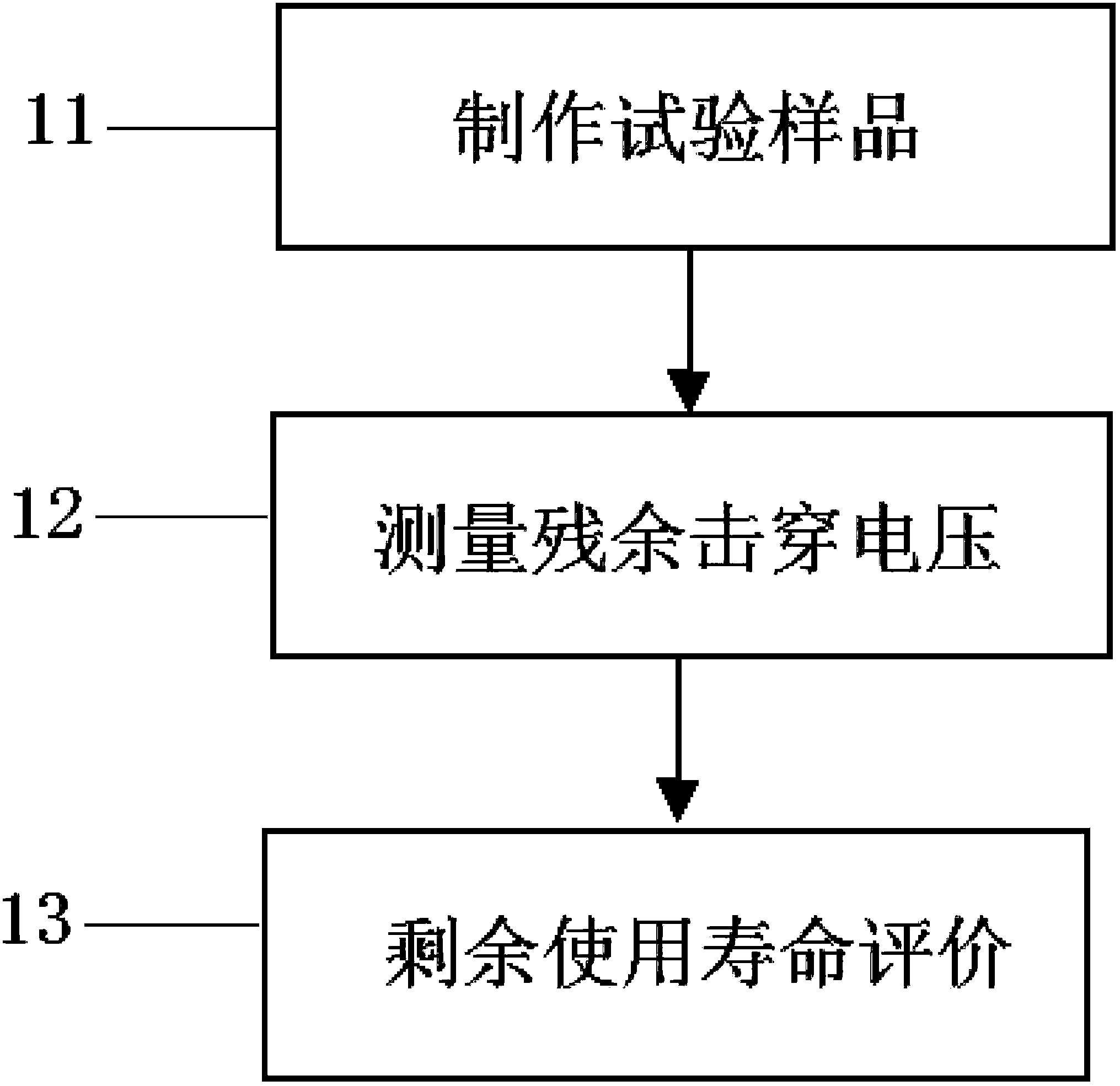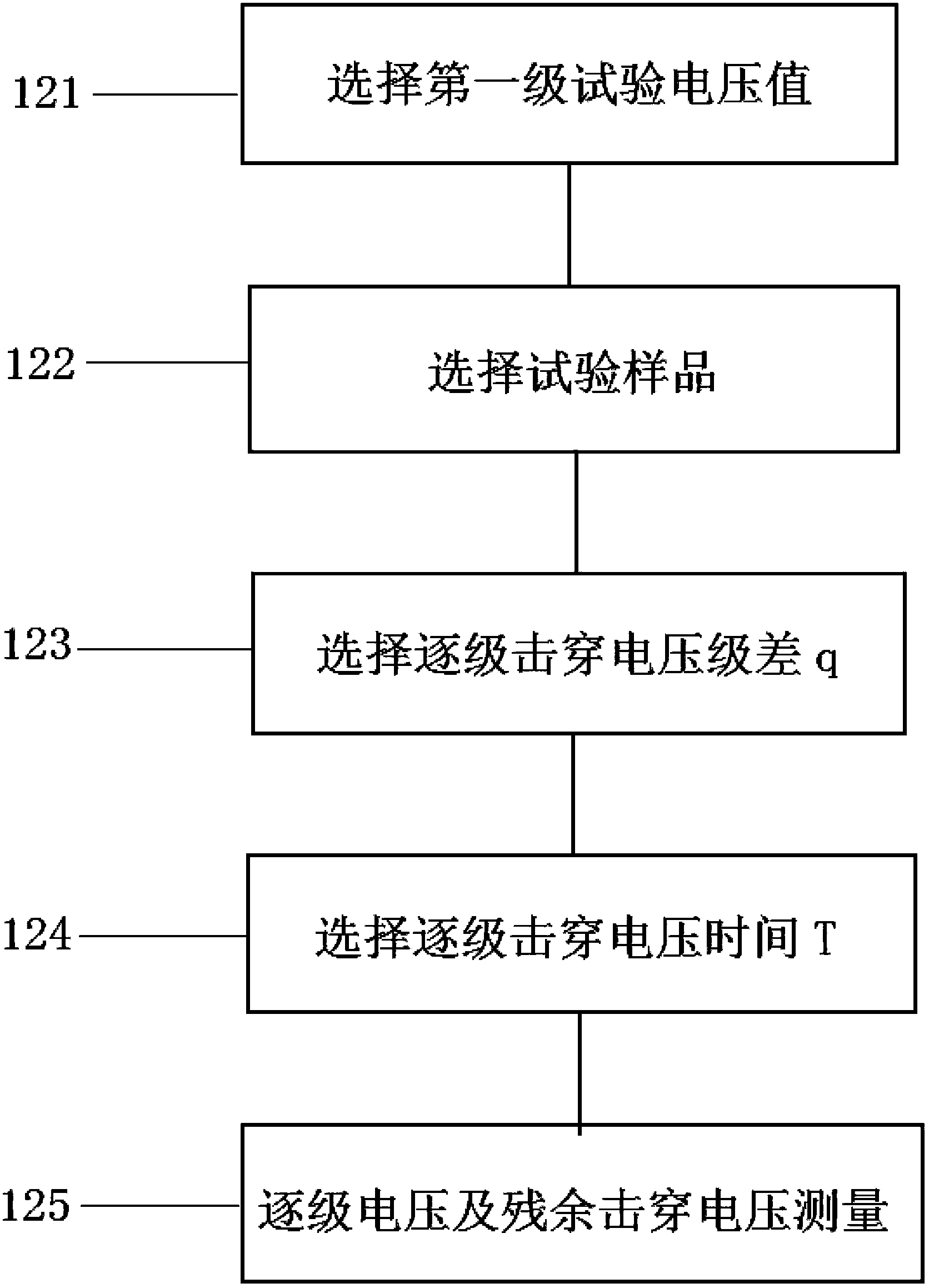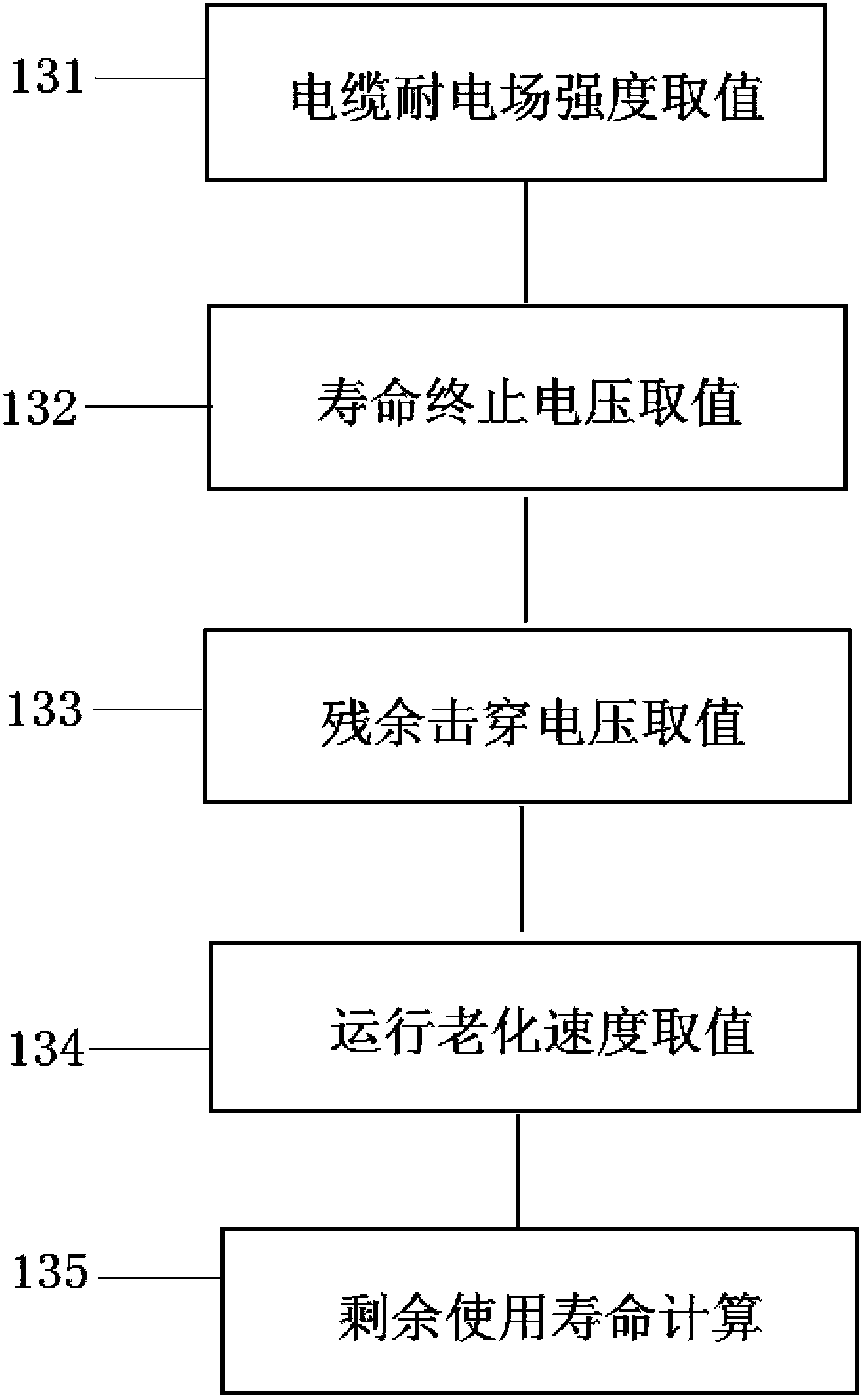Crosslinked polyethylene cable residual life assessment method
A cross-linked polyethylene and evaluation method technology, which is applied in the field of evaluation of the remaining life of cross-linked polyethylene cables, can solve the problems of ambiguity in dielectric strength and loss factor, and quantitatively determine the remaining life of cables, achieving high reliability and credibility , The evaluation method is simple, economical and practical
- Summary
- Abstract
- Description
- Claims
- Application Information
AI Technical Summary
Problems solved by technology
Method used
Image
Examples
Embodiment 1
[0090] The raw material yard is responsible for the transportation of raw materials for the main production line. There are 266 3kV high-voltage loop cables in the whole area, and the cumulative cable length exceeds 125 kilometers. The cables in the raw material field have been put into operation for 22 years until 2004. In order to understand the insulation performance and life of the cables in this area, the cables (same circuit) in two environments were taken out in 2004. The two environments are directly buried respectively. and racks. The cable was manufactured by Tengcang Cable Company in Japan in 1980. The sample cable consists of three loops, the operating voltage of the cable is 3kV, the designed dielectric strength of the main insulation is 20kV / mm, the main material of the cable insulation is XLPE, the thickness of the main insulation is 2.5mm, and the section is 3×35mm2. The power supply system of the raw material field is a small resistance grounding system.
[...
Embodiment 2
[0106] The operating voltage of the sample cable is 3kV or 10kV, the design withstand strength of the main insulation is 20kV~30kV / mm, the main material of the cable insulation is XLPE, the thickness of the 3kV main insulation is 4mm, and the cross-section is 3×250mm2, and the thickness of the 10kV main insulation is 5mm, the section is 3×240mm2. The energy ring power supply system is a small resistance grounding system.
[0107]Table 5 is the step-by-step breakdown voltage data of 3kV cables, Table 6 is the step-by-step breakdown voltage data of 10kV cables made in Japan for direct burial laying, and Table 7 is the step-by-step breakdown voltage data of domestic 10kV cables for direct burial laying. Among them, direct buried cables have been affected by groundwater for a long time.
[0108]
[0109] table 5
[0110] It can be obtained from Table 5 that the residual breakdown voltage of the cable is at least greater than 46.2kV, then:
[0111] Sd=[H*E-Sy] / N=(4×20-46.8)÷2...
PUM
 Login to View More
Login to View More Abstract
Description
Claims
Application Information
 Login to View More
Login to View More - R&D
- Intellectual Property
- Life Sciences
- Materials
- Tech Scout
- Unparalleled Data Quality
- Higher Quality Content
- 60% Fewer Hallucinations
Browse by: Latest US Patents, China's latest patents, Technical Efficacy Thesaurus, Application Domain, Technology Topic, Popular Technical Reports.
© 2025 PatSnap. All rights reserved.Legal|Privacy policy|Modern Slavery Act Transparency Statement|Sitemap|About US| Contact US: help@patsnap.com



